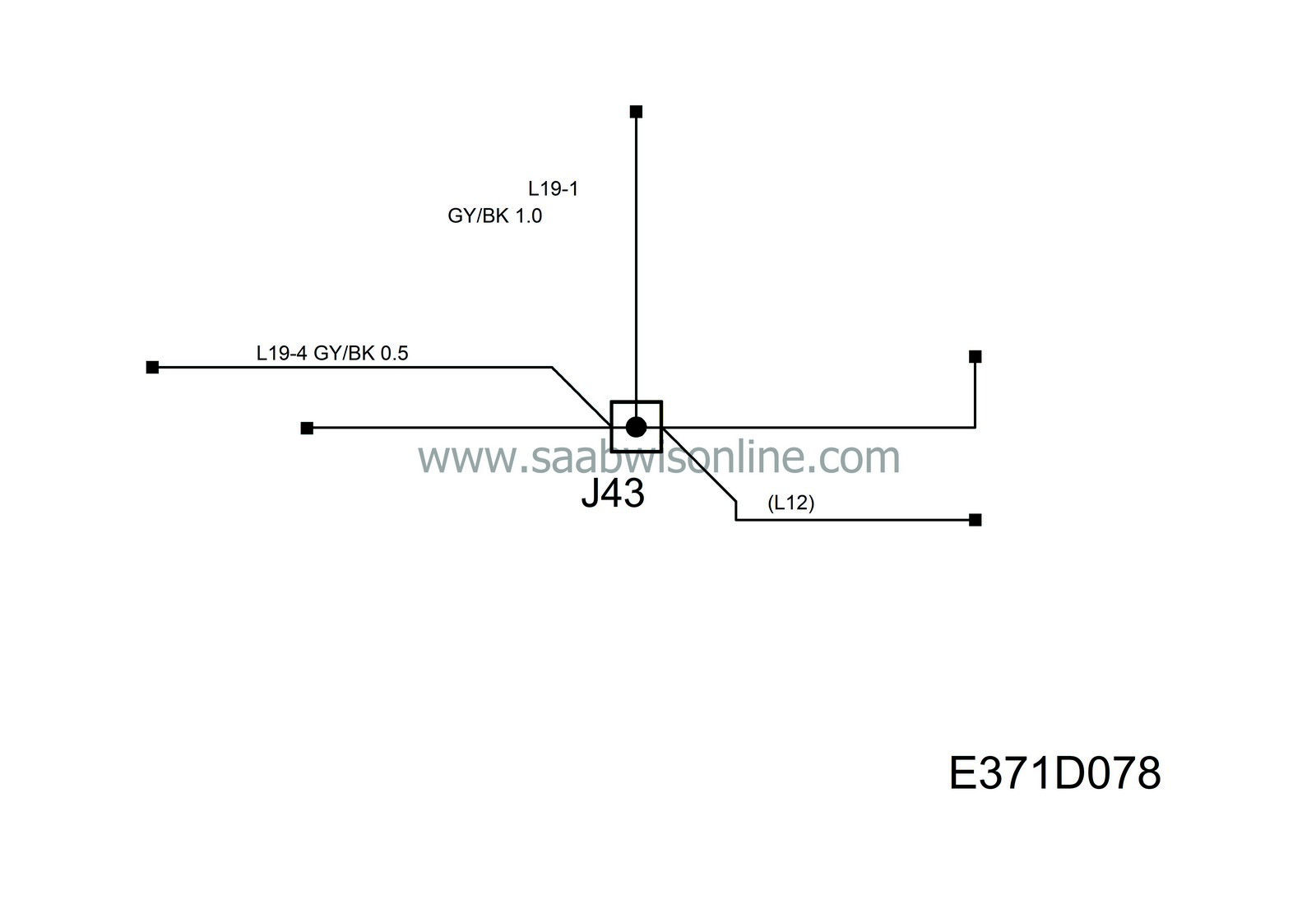Symbols used in the wiring diagrams
| Symbols used in the wiring diagrams |
| General |
Diagrams are drawn with the following conditions:
| • |
Unless otherwise indicated, switches and relays are represented in their inactivated and unenergized state.
|
|
| • |
No key in the ignition
|
|
| • |
Central locking system unlocked
|
|
| • |
Coolant, brake and washer fluids full
|
|
| • |
Gear lever/gear selector in neutral
|
|
| • |
Handbrake released
|
|
| Fuses |

To simplify fault diagnosis, a broken line is used in certain instances to signify the power supply.
The power supply to each fuse is shown in a separate diagram for power supply.
Example:
Feed to a fuse comes from +30. The diagram "Electrical system - Wiring harness - Wiring diagrams - Power supply +30" shows the feed up to the fuse in question.
| Grounding points |

Most grounding points in the car have a component number consisting of a letter and a number, e.g. G14.
Only components connected to the system are shown in a system diagram.
In some cases, grounding points are split into a "signal ground" and a "power ground". They are given the additional letter S or P respectively. Components with low current consumption and cable screens are grounded to the signal grounding point.
The sections "Electrical system - Wiring harness - Technical Description - Grounding points" and "Electrical system - Wiring harness - Component locations" indicate where grounding points are located and which components are connected to each grounding point.
Some components, such as door switches, are directly grounded in the body. The ground connection is drawn with a thicker line in comparison with the normal lead connection to the grounding point.
| Switches, relays and components |

The location of the relays is given in parenthesis below the component number.
| Note | ||
|
Pin numbers 1-9 are the numbers that are indicated in the main fuse box, not the pin numbers on the relay. |
When the box around the component is drawn with a solid line, the whole component is shown.
When the box around the component is drawn with a broken line, only part of the component is shown.
On some components having a hanging lead, the connector has not been given a separate H number to show that it is part of the component.
The components are designated by a serial number and one or more supplementary letters, which indicates their location and type. The location is indicated by capital letters, e.g. 298FL, while the type is indicated by lower case letters, e.g. 47a. The following abbreviations are used to indicate position:
|
C
|
=
C
entre
|
|
D
|
=
D
river's side
|
|
F
|
=
F
ront
|
|
H
|
= boot lid/tailgate (
H
atch)
|
|
P
|
=
P
assenger side
|
|
R
|
=
R
ear
|
|
LH
|
=
L
eft-
H
and side
|
|
RH
|
=
R
ight-
H
and side
|
The section "Electrical system - Wiring harness - Component locations" contains illustrations of the connectors of all components.
| Connectors |
The connectors located between the various wiring harnesses start with H, e.g. H16-1, where the number after the H indicates the number of pins the connector has. The number after the hyphen is a serial number within that pin quantity group. In the example H16-1, the connector has 16 pins and it is the first in the group.
The section "Electrical system - Wiring harness - Component locations" contains illustrations of all connectors.
| Sensors and monitors |

The component symbols for sensors and monitors have been simplified. The sensor's connection side/output has an internal symbol that shows the type of output signal. The other half shows a symbol for quantity.
All internal quantity symbols can also be used for other components.
a. Sensor output with continuous voltage
b. Sensor output with pulsing voltage, e.g. frequency or PWM
The outputs are combined with the following quantity symbols to indicate the correct type of sensor:
c. Temperature
d. Speed/rpm via toothed wheel or the like
e. Level
f. Sun
g. Load
h. Angle
i. Acceleration
j. Pressure
One type of sensor that can be used for different purposes is:
k. Hall sensor
A monitor is shown as a switch with quantity type:
I. Level switch
m. Pressure switch
| Crimped connections |

To reduce the number of connectors in the car, there are a number of crimped connections.
The crimp connectors immediately above the grounding points have been ultrasonic welded for reliability.
Only components connected to the system are shown in a system diagram.
The section “Electrical system - Wiring harness - Component locations” contains a diagram for each crimp connection with all connected components included.


